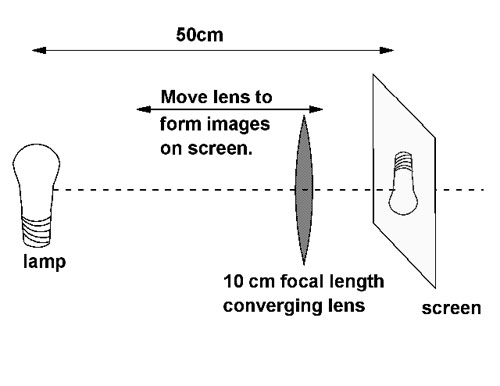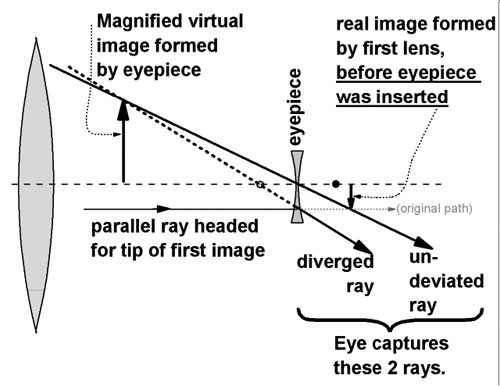Experiment of The Month
Microscope versus Telescope
A lab demonstration exercise helps solidify the difference between a microscope and a telescope.

The separation between light source and screen is fixed at about 50 cm. With a 10 cm lens, a sharp image will form on the screen when the distance between the lens and the light sources is either 32 or 18 cm. At 18 cm object distance, the image is magnified, as in the first lens of a microscope. At 32 cm, the image is smaller than the object, as in the first lens of a telescope. The image is inverted.
The microscope and the astronomical telescope uses a second converging lens as an eyepiece to magnify the first image. It can help understanding if the screen used is ground
The Galilean telescope magnifies that first image using a diverging lens. Now the screen must be removed. The "downstream" focal length of the converging lens is placed near the location of the image. As indicated in the figure below, the diverging eyepiece magnifies and inverts the first image, so that the eye sees an "erect" image.

A technical note: The first lens forms an image which is obliterated when the second lens (eyepiece) is put into place. You can get the right answers using the usual1/f = 1/i + 1/o lens formula, provided that the object is a *virtual* object, located where the first lens image used to be.
-
Contact Information
Contact Number: 717-871-4297
Email: physics@millersville.edu